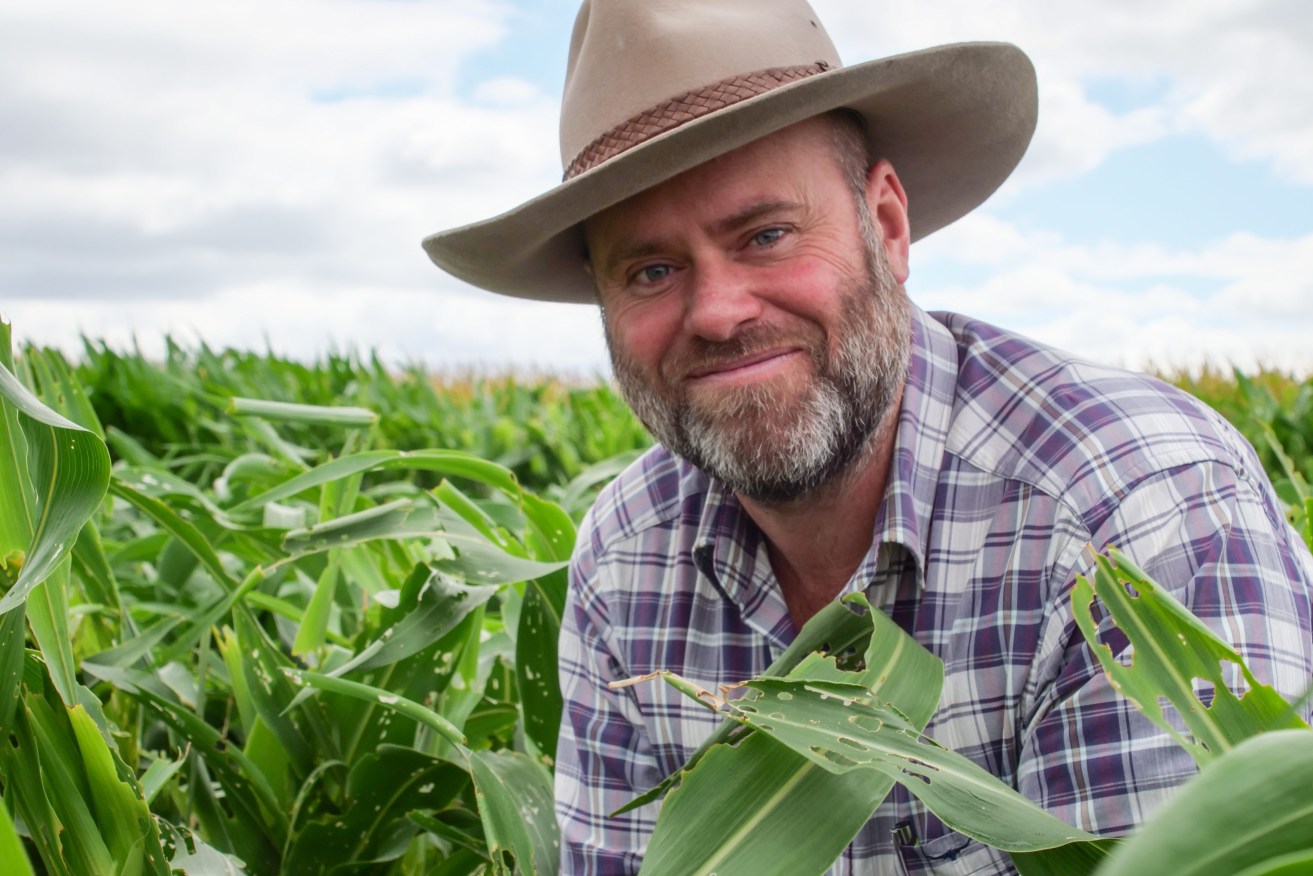How Queensland is putting the bite on a damaging pest
Three years after first emerging in Queensland grain crops, the exotic fall armyworm appears here to stay, forcing scientists to confront its management rather than eradication.


Dr Joe Eyre on the trail of fall armyworm. Picture: Megan Pope.
The highly invasive pest native to Central America gained a foothold in the country via Queensland’s far north just as the country was locking down for Covid.
Unlike the pandemic which seems to be shrinking from the public’s alert levels, the fall armyworm continues to pose a major threat to broadacre crops including maize and sorghum, both of which are abundantly grown in Queensland.
As the University of Queensland’s Dr Joe Eyre, from UQ’s Queensland Alliance for Agriculture and Food Innovation (QAAFI) explains, farmers still do not know when and how to treat the pests to save their crops without cruelling their finances in the operation.
“The overseas recommendations for treating fall armyworm are vague, and we don’t know how they relate to the Australian environment,” Eyre said.
“The current recommendations are to take action based on obvious damage from the caterpillars, which may not be the most economically efficient or ecologically friendly time to protect crops.”
While the Queensland Department of Agriculture and Fisheries (DAF) and its agency Biosecurity Queensland copped criticism when the pest breached the state’s defences, the department is now working with QAAFI and the Grains Research and Development Corporation (GRDC) to develop the first customised treatment guidelines for Australian grain growers.
The aim, Eyre said, was to determine economic thresholds for treating the pest to give farmers certainty they won’t break the bank in pursuit of saving their crops from the insect’s voracious appetite.
“Fall armyworm are easy to treat when small so we need to predict what the likely yield loss is going to be if the infestation is not treated, as opposed to spending money on treatments when it is too late or when fall armyworm are unlikely to result in yield penalty,” Eyre said.
“The development of these economic thresholds will be absolutely fundamental to the management of fall armyworm in broadacre crops.”
DAF’s Dr Melina Miles said researchers and farmers were in unchartered territory as Australia had never before faced a “severe defoliating pest”.
“Most producers haven’t seen a shredded crop, so there’s a lot to learn,” Miles said.
She said field trials in maize and sorghum at UQ’s Gatton campus were providing important data.
“Australia’s grains industry is used to having economic thresholds on which to base decisions about crop management and farmers are crying out for guidance because fall armyworm is so damaging and new,” she said.
The guidelines will be finalised by June 2024, but Eyre and Miles are already presenting their work at industry conferences.








